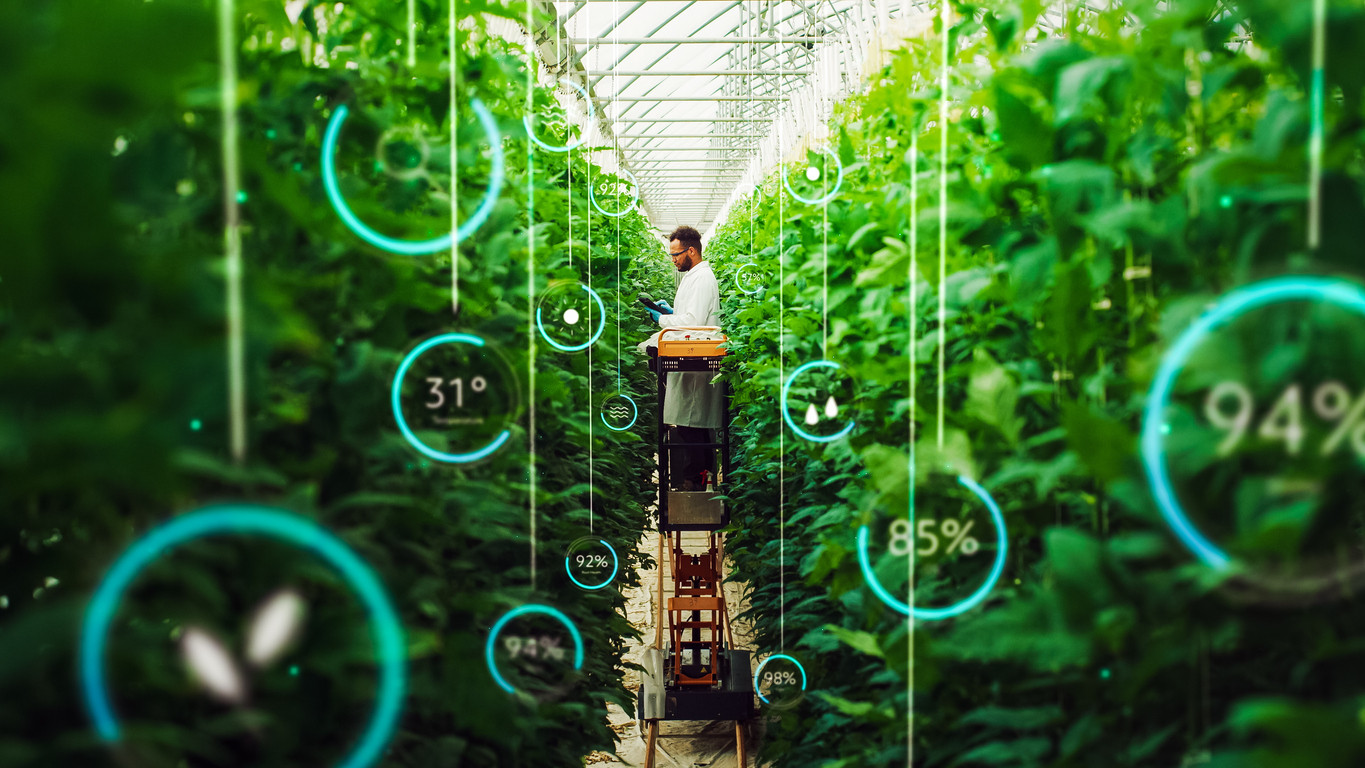Whitepaper: CO2 & Lighting in Closed Environment Agriculture
Technical Analysis | 04-04-2024 | By Jack Pollard
In this whitepaper by Dr. Prashanth Makaram, Founder and CEO of Crocus Labs GmbH, supported by Infineon, the focus is on the crucial roles of CO2 levels and artificial lighting in enhancing productivity in Controlled Environment Agriculture (CEA) settings like vertical farms and greenhouses. It highlights the challenge of maintaining optimal conditions for plant growth and demonstrates how precise monitoring and adjustment of CO2 and light can significantly boost crop yields and quality. By leveraging Infineon's XENSIV™ PAS CO2 sensor alongside Crocus Labs' smart lighting, growers can achieve a fine balance in the environment, resulting in efficient use of resources, reduced energy consumption, and ultimately, more sustainable food production practices. This approach not only optimises plant health and output but also allows for agile adjustments in crop strategy to better align with market demands.

Introduction
The advent of vertical farms and modern greenhouses has revolutionised the field of horticultural farming, offering innovative solutions to address the increasing demand for sustainable food production. These controlled-environment agricultural systems utilise advanced technologies to optimise resource usage, maximise crop yields, and minimise environmental impact. However, managing and maintaining optimal growing conditions within these enclosed spaces pose significant challenges. In addition to artificial lighting, one critical factor that significantly affects plant growth and productivity is the concentration of carbon dioxide (CO2).
Problem Statement
In controlled environment agriculture (CEA), such as vertical farms and modern greenhouses, maintaining optimal growing conditions is essential for achieving maximum crop productivity. Two critical factors that significantly influence plant growth are artificial lighting and CO2 concentration. In CEA, optimising light spectrum, intensity, and duration measured by Daily Light Integral (DLI), is crucial for promoting crop growth and maximising yields. Unlike us humans, who suffer from higher CO2 concentrations, crops need a certain level of carbon dioxide, typically maintained between 800 ppm (e.g seedlings of tomatoes, cucumbers) and 1300 ppm to be able to grow efficiently and thrive in controlled environments. The lighting needs and CO2 requirements vary depending on the crop variety and its specific stage of growth. The CO2 concentration in tightly sealed CEA growing operations can quickly dip down to 200 ppm, prompting almost all CEA businesses to use CO2 dosing as a compensatory measure to bring the CO2 levels to optimal concentration. Unlike other environmental factors, CO2needs to be controlled precisely and is highly affected by ventilation, plant growth period, and weather. CEA facilities often feature ventilation systems and physical structures like racks and trays that impede air movement, resulting in stratification within the environment. Consequently, certain areas may experience suboptimal CO2 concentrations, adversely affecting photosynthesis and overall plant performance. To mitigate this issue, growers increase the overall CO2 levels in the farm by injecting additional CO2. However, growers must exercise caution, as excessive CO2 dosing can lead to imbalanced plant growth, reduced crop quality, and increased operating costs. The imbalance between CO2 supply, crop uptake, and ventilation also contributes to climate change through direct CO2 emissions, while mandates for green energy requires farms using boiler heating systems for generating CO2 to explore alternative enrichment systems.
Solution: Infineon Meets Crocus Labs
To address these challenges, growers can exploit the relationship between CO2 concentration, light intensity, and photosynthesis to optimise for plant growth and productivity. Figure 1 depicts the CO2 and light intensity curve. By maintaining the right balance of CO2 and light spectra, growers can maximise the quantum yield for CO2 assimilation. However, there is a saturation point where further increases in CO2 and light intensity have minimal impact on photosynthetic activity. Strategically placing CO2 sensors throughout the cultivation area allows growers to gain comprehensive insights into CO2 distribution and make informed decisions regarding CO2 supplementation and light spectra. Crocus Labs ' intelligent lighting system leverages the Infineon XENSIV™ PAS CO2 sensor in order to collect data from different parts of the farm. This seamless integration enables synchronisation of the spectral outputs of the lights with the specific CO2 requirements of different plants at different growth stages and at different locations creating an ideal growth environment. By ensuring even photosynthetic rates tailored to the plants ' needs, growers can achieve higher yields, improved crop quality and reduce operating costs (from electricity and CO2 dosing). This ability to precisely control light spectrum and CO2 also offers farms the flexibility to mitigate market risks by adapting their crop selection. For instance, in a scenario where the market becomes saturated with cucumbers, causing a drop in their price, farms can simply adjust the light and CO2 parameters to accommodate a different crop. This adaptability helps them avoid financial losses and maintain profitability.
By integrating Infineon's highly accurate XENSIV™ PAS CO2 sensor with Crocus Labs ' intelligent lighting system, Crocus Labs provides growers with a comprehensive solution that combines real-time CO2 monitoring, precise lighting control, and smart spectral tuning. For instance, in a 10 meters high vertical farm spread over 1000 sq. mts cultivating leafy greens, the integration enables growers to monitor CO2 levels and dynamically adjust the lighting spectra at different locations of the farm to compensate for the loss in optimum CO2 level and thus match the specific needs of the plants. By analysing the CO2 sensor data and utilising advanced algorithms, the lighting system can intelligently tune the spectral output to optimise photosynthetic efficiency, promote plant quality while reducing the need for CO2 overdosing.
In another use case, consider a greenhouse cultivating fruiting crops. With the integration of Infineon's CO2 sensor and Crocus Labs ' lighting system, growers can finetune the spectral composition of the light based on the real-time CO2 measurements. For example, during the transition from flowering to fruiting stage, the XENSIV™ PAS CO2 helps to maintain uniform CO2 levels, while the Crocus labs lighting system can be tuned to add more red wavelength to improve fruit development. By precisely controlling both the CO2 levels and the lighting spectra, growers can create an ideal growth environment that maximises the plant' s photosynthetic capacity, resulting in vibrant and healthy flowers.
To continue reading this whitepaper, please click HERE.

